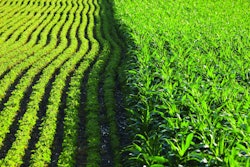
US-based Perdue Farms is importing soybeans from Brazil while other countries switch up feeding strategies
Perdue Farms Inc. is importing soybeans from Brazil as U.S. supplies shrink, according to Bloomberg.
High grain prices have caused some countries to change their poultry and livestock feed formulations or shifted where some get their supply.
Bloomberg said U.S.-based Perdue would import 31,450 metric tons of soybeans from Brazil. Meanwhile, Brazilian producers have begun substituting wheat for expensive corn in animal feed. Pilgrim’s Pride CEO Fabio Sandri said during a quarterly earnings call on April 29 that European producers are following suit.
“Wheat prices in Europe have also recently risen from the following the rally in global corn markets. With higher point prices, we are seeing wheat start to work into feeding rations globally,” Sandri said.
And, last week, China’s Ministry of Agriculture and Rural Affairs published guidelines that recommend lowering the amount of corn and soybean meal in pig and poultry feed. The guidelines include recommendations for alternative ingredients, “with the goal of improving the usage of available raw materials and creating a formula that better suits China’s conditions.”
China has started importing more wheat as well.
“When prices get high and supplies are tight you tend to get out of the ordinary moves,” Stephen Nicholson, a senior grain and oilseed analyst at Rabobank, told Bloomberg.
While the U.S. Department of Agriculture expects fewer planted acres to go to corn and soybeans that originally predicted, prices and weather conditions could encourage more planting.
“We expect a good weather forecast and the recent increase in new crop prices to incentivize farmers to plant more acres,” Sandri said, adding that crop conditions in the United Kingdom and western Europe are “significantly better” than in 2020.
Corn vs. wheat
Wheat is routinely used instead of corn in feed, but some considerations must be made in formulation, manufacturing and handling. Nutrient variability between varieties of wheat is often greater than between wheat and other cereals. For example, protein in corn varies between 6% and 10%, with common feed varieties giving a more stable value of 8% protein. In contrast, protein in wheat varies from below 10% (in some soft varieties) to more than 18% (in some hard varieties) with no accepted mean value for all wheat. In order to formulate diets correctly, the variety of wheat used must be identified.
The high presence of non-starch polysaccharides (NSP) in wheat increases gut viscosity. The bioavailability of biotin in wheat is virtually zero, compared with about 75% in corn. And the presence and levels of most known mycotoxins might be different in wheat than in corn.
Other alternatives to corn can be used in feed, including bakery meal, oils and fats, cassava, sorghum and soybeans.










